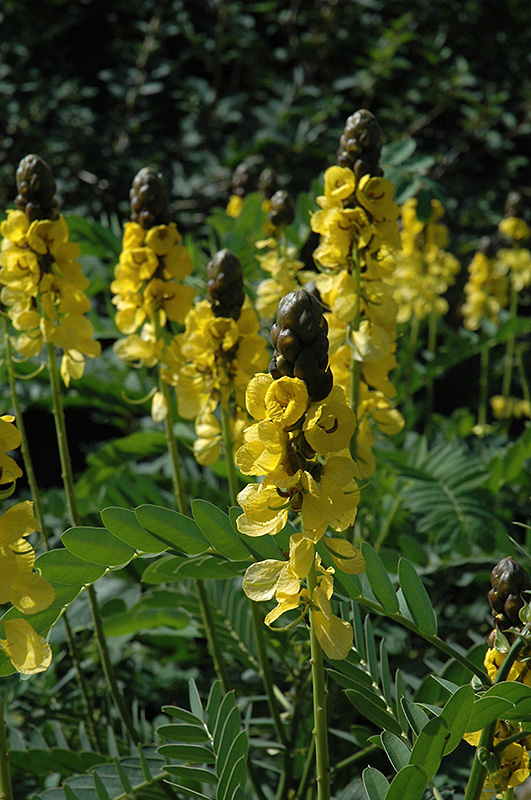10 feet
8 feet

(annual)
Popcorn Cassia, syn. Senna didymobotrya
Peanut Butter Cassia features showy racemes of yellow cup-shaped flowers rising above the foliage from late winter to late fall. Its attractive tomentose oval compound leaves remain dark green in color throughout the season. The fruits are showy green pods displayed in mid spring.
Peanut Butter Cassia is an open multi-stemmed annual with an upright spreading habit of growth. Its medium texture blends into the garden, but can always be balanced by a couple of finer or coarser plants for an effective composition.
This plant will require occasional maintenance and upkeep, and should only be pruned after flowering to avoid removing any of the current season's flowers. It is a good choice for attracting birds to your yard. Gardeners should be aware of the following characteristic(s) that may warrant special consideration;
Peanut Butter Cassia is recommended for the following landscape applications;
- Mass Planting
- Hedges/Screening
- General Garden Use
Peanut Butter Cassia will grow to be about 10 feet tall at maturity, with a spread of 8 feet. Although it's not a true annual, this fast-growing plant can be expected to behave as an annual in our climate if left outdoors over the winter, usually needing replacement the following year. As such, gardeners should take into consideration that it will perform differently than it would in its native habitat.
This plant should only be grown in full sunlight. It is very adaptable to both dry and moist locations, and should do just fine under typical garden conditions. It is not particular as to soil type or pH. It is somewhat tolerant of urban pollution. This species is not originally from North America, and parts of it are known to be toxic to humans and animals, so care should be exercised in planting it around children and pets.
